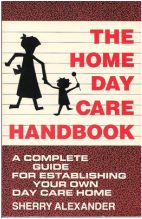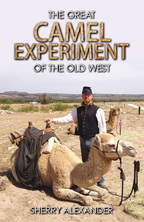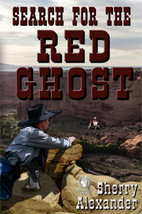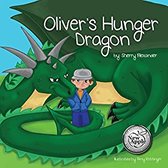Throughout history, children have drawn a series of pictures, stacked them together one after another, then flipped the pages with their thumbs so the images appear to move. Animation is like those early flip books only; it involves millions of drawings to create the magic in a film like “Snow White and the Seven Dwarfs”. To completely recognize the evolution of animation, it is important to understand what the word means. Author Alyssa Maio identifies it as “A method of photographing successive drawings, models, or even puppets, to create an illusion of movement in a sequence” in her article “What is Animation? Definition and Types of Animation''. The movement and speed of those images is based on two things-the human eye and the brain. “Our eyes can only retain an image for approx. 1/10 of a second,” explains the author, “and when multiple images appear in fast succession, the brain blends them into a single moving image”. Adding color to those images stimulates the brain to the point that an emotional effect is created in the viewer, but it all starts with the drawing. Steve Little in his video “The Animation Process from 1938” states that it is the “artists after much trial and error [create] several hundred rough drawings illustrating the high points of each story”. Each drawing must show a slight movement of the character so when speed is added to the sequence, every gesture, twinkle of the eye, or step taken tells the brain the character or object is moving. As with all things, animation had a beginning, and while some believe it began when man first painted on a cave wall, the time frame is not thousands of years but less than 150 years ago.
Before the illusion of movement entranced theater goers in 1937 with the showing of Snow White, Christian Huygens, a 17th century Dutch Scientist, imagined that educating his students could be enhanced if he were able to project his images of the skeletal body on a screen. His device “was the earliest form of a slide projector . . . illuminated by candles” (Kelly). Huygens’s creation was the magic lantern. It used a mirror with a reflective surface that curved inward set-in front of a candle. The light reflected through an image painted on a glass slide and was shown on a screen. Huygens’ first pictures were “hand painted on glass slides. Initially, figures were rendered with black paint” (Kelly). With the candle as the light, the flame flickered and so did the image on the screen. That is why his device was also called “lantern fright” (Kelly). However, by the 18th century the magic lantern moved from education to entertainment. “Magic Lantern Shows”, as they were called, used something like an early overhead projector to cast images of silhouetted puppets moved by a puppeteer back and forth. The Magic Lantern shows may have been an illusion of movement, but the 19th century is where true animation began.
Initially, audiences were drawn to the simple movement of figures flickering on the screen, but it wasn’t until 1832 that the first true animation device was created by Joseph Plateau. Using the persistence vision principle which is “an optical illusion where visual perception continues after the object itself has ceased to exist” (“Persistence of Vision | Dictionary of Important Terms in Animation ''), Plateau developed a spinning disc called a “Phénakisticope . . .[which] created a fluent illusion of motion” (Maio). The phenakistoscope was a disc with drawings of a figure in various positions centered around the middle A slit was made between each image, and the disc was then spun in front of a mirror using a spindle in the middle. As the user looked through the slits in the mirror’s reflection, the eye and brain worked together to see constant motion—the illusion of movement.
From that simple device, the evolution of animation continued to advance. In 1908, Emile Cohl, a French cartoonist, created an eighty second film. He drew seven hundred images of a stick man using various objects traced on an illuminated glass plate. In 1914, “Gertie the Dinosaur'' appeared as the first cartoon with a cute dinosaur as the main character. Then in 1928 when Disney created “Steamboat Willie ''. The success of that cartoon worked on Walt Disney to produce “the first ever full-length animated film. ‘Snow White and the Seven Dwarfs'’” (“History of Animation Timeline”). Before the 1930s, flat characters and backgrounds were drawn on cels and only moved from side to side, but when “Snow White and the Seven Dwarfs' ' was created in 1937 characters had dimension and a movement not seen before. In the book, “Shadow of a Mouse '', the author, Donald Crafton identifies this time period in animation as “extraordinarily rapid” in the way animation looked and felt. The early history of animation is full of examples where cartoons, short films and full-length movies communicated feelings, ideas and laughs, but the best was yet to come when two-dimensional and three-dimensional animation were developed.
Earlier than three-dimensional (3-D) animation, artists drew images that were like a photograph. Each drawing in two-dimensional animation is displayed only by its width and height, which means there is no depth or thickness in 2-D. It is “the art of creating movement in a two-dimensional space. This includes characters, creatures, FX, and backgrounds” (Stefyn). Examples of 2-D films include “Beauty and the Beast” and “Pinocchio”. However, that all changed when the computer met animation. In 1993, “Apple computer company produced a method for creating 3-D films, and in 1995 Toy Story was released as the first full-length 3-D film. The animation industry would never be the same” (“History of Animation Timeline”) 3-D animation is more complex because it creates a 3-dimensional image digitally, so the illusion of movement provides characters that are closer to real in appearance and action.
Subsequently, a 3-D animator builds the body from the bone structure to little details like hair and accessories. “In 3-D animated movies, the animator uses a program to move the character’s body parts around. They set their digital frames when all the parts of the character are in the right position. They do this for each frame, and the computer calculates the motion from each frame”(Maio). For example, in the movie “Finding Dory '' the character Hank is an octopus, but because in real life the octopus has no bones, they had to devise a new way to build an octopus and could only manage to give him seven arms. This required numerous joints to be included in the original animation until it could fluidly move within the animation. 3-D animation has made shows such as “Arcane” possible.“Arcane” is a combination of 3-D and 2-D animation which allows the animators to give the characters a more human appearance and movements. Whether the animation is in 2-D or 3-D, the creation of the computer opened the way for animation to evolve into what we view today, and the advancement even enhanced the way stop motion animation is created.
In the same way that the computer made 2-D and 3-D easier to create, it lessened the time needed to make stop motion films. Stop motion is one of the oldest forms of filmmaking. It is a frame-by-frame creation that can take up to eight to ten weeks just to make 60 to 90 seconds of film. Each movement is physically adjusted to both the background and the character, and then a picture is taken. The next movement is adjusted, and another picture is taken. The film can take thousands of pictures which were arranged in sequence then filmed. “Stop motion encompasses Claymation, pixelation, object-motion, cutout animation, and more. But the basic mechanics are similar to the traditional style like a flipbook. However, instead of drawings, stop motion adjusts physical objects in each frame” (Maio). With the creation of the computer, stop motion took less time to create. No longer did stop motion rely on a camera to snap the picture. The computer was much faster and there was no need to develop all those photographs in a dark room. The computer took the picture and produced it on film in a lot less steps. Both “Wallace and Gromit” and “Chicken Run” were , and they took hundreds of hours and movements of the clay figures to obtain the motion. Other examples of stop motion films include “The Boxtrolls”, “Missing Link”, and “Kubo and the Two Strings”. The company responsible for these movies LAIKA uses stop motion to make all their movies. Stop motion is just another unique method of communicating the illusion of motion in films today.
To summarize how animation, the illusion of movement, has evolved from simple images flickering in candlelight cast on a blank wall to a unique method of communicating feelings and ideas through cartoons, short-films, and full-length movies with techniques involving 2-D animation, 3-D animation, and stop motion animation, the journey took initiative, creativity, and action on the part of early dreamers like Christian Huygens, Emile Cohl, and Walt Disney. Their visions moved animation from simple flickering images on a wall for education to silhouetted puppet shows for entertainment to the 2-D, 3-D, and stop motion movies we see now. Will the combination of 2-D and 3-D animation in the series “Arcane” or the way it is used in the sequel to the movie “Avatar” make the audience whisper, “Is this the end?”. With animation, anything is possible.
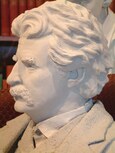







 RSS Feed
RSS Feed
